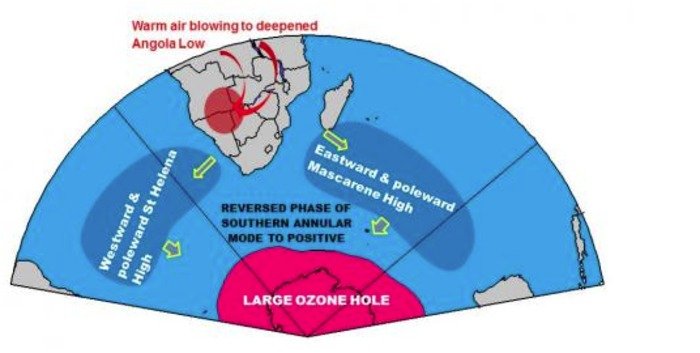Linking the development of Large Ozone Hole to warming over southern Africa. Illustration represents the state after the development of the large ozone hole. Credit: Desmond Manatsa
BINDURA, Zimbabwe, Oct. 14 (UPI) -- A decades-long warming trend in southern Africa is likely the result of the ozone hole over the Antarctic and its effect on wind circulation, researchers say.
In early summer southern Africa is affected by what is known as the Angola Low, a low-pressure system that pulls in warm air from the lower latitudes, increasing temperatures.
But during the past 20 years, the researchers said, the annual rise in temperatures has been nearly two degrees Fahrenheit hotter than normal.
Desmond Manatsa, a climate scientist at Bindura University of Science in Zimbabwe, working with international colleagues, analyzed climate data from 1979 to 2010, and found as the size of the ozone hole -- caused by human use of fluorocarbons -- grew, temperatures in southern Africa rose as well.
The ozone hole is largest over the Antarctic in the southern hemisphere's spring and caused the polar stratosphere to cool, which shifts the belt of strong westerly winds that circle the Antarctic closer to the pole, changing adjacent pressure systems such as the Angola Low, the researchers said.
The Antarctic ozone hole has also increased the frequency and intensity of summer rainfall in the subtropical regions in the southern hemisphere, including the southern Indian Ocean and eastern Australia, they said.
"The ozone hole is a dominant feature in the southern hemisphere," Ted Shepherd, an atmospheric scientist at the University of Reading in Britain said. "Originally we thought that the effects were limited to middle or higher latitudes, but it's increasingly clear that it is the lower latitudes as well."















